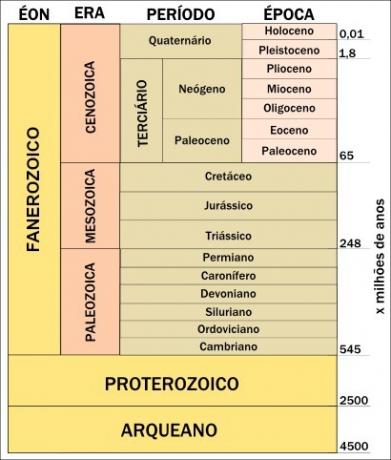Crop rotation is an agricultural technique that alternates, in an orderly and planned way, different cultures in the same area in a given period. This planting technique aims to soil conservation and the consequent reduction in their exhaustion.
In this practice, for example, a plant species is not repeated in the same area over a set period. It is feasible to alternate species of different root systems (roots) in order to alleviate the compaction effects of the ground. The species chosen must present, in addition to commercial advantage, a soil recovery purpose.
Why is crop rotation important?
Crop rotation is a planting technique combined with the Direct Planting System (SPD). According to the Brazilian Agricultural Research Corporation (Embrapa), in the SPD, the usual planting preparation steps are not carried out, such as plowing (inversion of soil layers) and harrowing (breaking of the clods left by the plowing process as a way to flatten the ground).
By alternating crops in a planned and orderly manner, crop rotation
efficiently reduces environmental impacts caused by monoculture (Agricultural production of only one species), such as physical, chemical and biological soil degradation and pest development. Therefore, this planting technique, in addition to favoring soil conservation, increases productivity and reduces the occurrence of pests.Also know:What are the main agricultural powers?
Main goals
Soil conservation;
Improvement and maintenance of soil fertility;
Better use of machinery and labor;
Decrease in the incidence of pests, diseases and weeds;
Increased soil organic matter content;
Structuring and unpacking the soil;
Stabilization of the productivity of cultivated species.

The alternation of crops provides several benefits, such as diversified production and soil conservation.
Benefits
Diversified crop production;
Improvement of the physical, chemical and biological characteristics of the soil;
Assistance in controlling and reducing the occurrence of weeds, diseases and pests;
Replacing organic matter;
Protection of the soil against the action of climatic agents, increasing production stability;
Feasibility of the SPD;
Increased productivity.
Disadvantages
Difficult preparation of strategic planning that meets the objectives.
Need for greater investments, especially in machinery.
Mechanization dependent on well-directed work.
Difficulty in crediting and investing in less important cultures.
Crop Rotation x Monoculture
Read too:Soil degradation in Brazil

Monoculture favors soil exhaustion and is a practice more susceptible to the occurrence of pests and diseases.
Do not stop now... There's more after the advertising ;)
What is succession of cultures?
Crop succession is an agricultural technique in which two or more species are cultivated. insequence in the same area for a certain period (usually a year). This practice does not take into account the botanical family of species. It differs from crop rotation in that it alternates the cultivated species while the former cultivates sequentially.
Crop succession can cause physical, chemical and biological degradation of the soil, causing a drop in productivity and favoring the development of weeds, pests and diseases.
Selection of species for cultivation in crop rotation
The cultivable species that make up the crop rotation system are selected according to some fundamental criteria:
Present commercial and soil recovery purpose.
Produce phytomass (mass of plant beings that live on the soil surface) sufficient to control the erosive processes, reduce temperature fluctuations and reduce water loss through the evapotranspiration.
Provide favorable conditions for the soil in order to reduce its susceptibility to the action of pests, diseases and weeds.
Present different nutritional requirements and nutritional performance.
Have different susceptibility to pests and diseases.
Due to their great soil protection capacity, the most suitable species are corn, soybeans, beans, oats and grasses.
Crop rotation and sustainability
Crop rotation and sustainability go hand in hand due to the numerous benefits provided by this agricultural practice. By alternating the cultivation of different species in an area, rotation makes the land more productive and reusable. In this way, there is no need to use new areas, which leads to a reduction in deforestation.
The practice also favors soil conservation, as it protects it from processes of leaching and retains its moisture. It also promotes the improvement of the physical, chemical and biological characteristics of the soil, reducing its exhaustion and conserving its nutrients.
In areas where there is a predominance of monocultures, it is essential that crop rotation is practiced. According to agronomist José Laércio Favarin, a professor at USP, crop rotation should not be practiced only as a remedy, but preventively, seeking to produce with sustainability.
Read more:Agriculture and sustainable development
Summary
Crop rotation is one of the techniques combined with the No-Till System and sustainability. This agricultural practice consists of the planned and orderly alternation of crops in an area in a given period. Species are selected according to some criteria, such as having different susceptibility to pests and diseases and having different nutritional needs. The main objective of crop rotation is to promote soil conservation, thus preventing its depletion. There are many benefits of this practice, such as the conservation of the physical, chemical and biological characteristics of the soil, in addition to greater productivity.
by Rafaela Sousa
Graduated in Geography
Would you like to reference this text in a school or academic work? Look:
SOUSA, Rafaela. "Crop rotation"; Brazil School. Available in: https://brasilescola.uol.com.br/geografia/rotacao-culturas.htm. Accessed on June 27, 2021.


